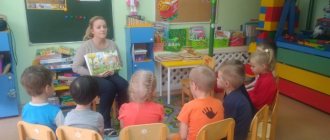LABOR EDUCATION OF PRESCHOOL CHILDREN. - presentation
T OCCUPATIONAL EDUCATION OF PRESCHOOL CHILDREN
T RUD IS A POWERFUL EDUCATOR IN THE PEDAGOGICAL EDUCATION SYSTEM OF A.S. M AKARENKO.
Labor education is a joint activity of the teacher and students, aimed at developing general labor skills and abilities, psychological readiness for work, the formation of a responsible attitude towards work and its products, and a conscious choice of profession.
Tasks of labor education based on the classification of Yu.K. Babansky, V.I. Loginova, V.G. Nechaeva, R.S. Bure. Group 1 Group 2 Helping the child master work activity (formation of work skills, abilities, its organization, planning, control, objective self-esteem). Development of the child’s personality in work (hard work, responsibility, habits of work effort); formation of a respectful attitude towards the worker, careful attitude towards the results of work; the formation of moral and volitional qualities (perseverance, determination), the formation of relationships and the acquisition of social experience of interaction.
Contents of preschool labor (V.G. Nechaeva, G.N. Godina, D.V. Sergeeva, R.S. Bure, L.I. Zakharevich) Self-service Household labor Labor in nature Manual and artistic labor
Form of work organization: Assignments - Can be individual, subgroup, general; By duration - short-term or long-term, permanent or one-time; The content corresponds to the types of work. Duty - Involves the work of one or more children in the interests of the group (duty in the dining room, in a corner of nature, in preparation for classes). General - Work is aimed at solving moral problems, creates favorable conditions for developing in children the ability to coordinate their actions, help each other, and establish a uniform pace of work. Joint - Collective work (work by the whole group at an older age) -
Labor organization is the leading means of labor education. In the process of work, the following occurs: Accumulation of practical experience, Formation of skills and abilities, Formation of ideas about work activity (presence of labor effort, obtaining a result), Formation of various knowledge (for example, about the growth and development of plants, about the benefits of the work of people of different professions), Expansion of horizons , Expansion of vocabulary, Expansion of ideas about sensory standards, Participation in work allows children to demonstrate their skills, Allows them to receive an assessment, Feeling of joy from the result of work, Showing attention to work partners.
Solving moral problems in types of work: Self-service - Nurturing independence, culture of appearance, habits of neatness. Household work - Focus of work on others, responsibility to the group for the quality of one’s work. Manual labor - Development of volitional efforts, creativity. Work in nature - Fostering responsibility for the lives of animals and plants.
Forms of introducing children to the work of adults: Observations, Excursions, Reading fiction, Looking at paintings and illustrations, Didactic games, Organization of feasible assistance to adults, Organization of joint work of children of senior preschool age with adults, Partnership relationships between them.
Conditions for educating preschoolers at work: Creating an emotionally positive atmosphere in the process of work; Organization of the material environment and work equipment; Taking into account the volume of workload when performing a labor task or work; Taking into account individual interests, the child’s inclinations for a certain type of work, health status; Inclusion of a teacher in the work of children as a partner; Providing morally valuable motivation; Formation of an economic way of thinking through familiarization with economic categories: money, things, labor, cost. Creating the prerequisites for economic education in work: careful attitude to the results of labor, rational use of materials, an idea of the cost of objects and the labor invested in their creation; Diversity of children’s work activities, hygienic requirements for the organization of children’s work activities and work equipment; Methodologically correct guidance aimed at simultaneously solving the problems of training and education.
Means of labor education: Children’s own labor activity; Training in labor skills and work organization; Familiarization with the work of adults; Organization of labor activity; Artistic media: fiction, music, works of fine art, filmstrips, videos, slides.
Thank you for your attention!.



